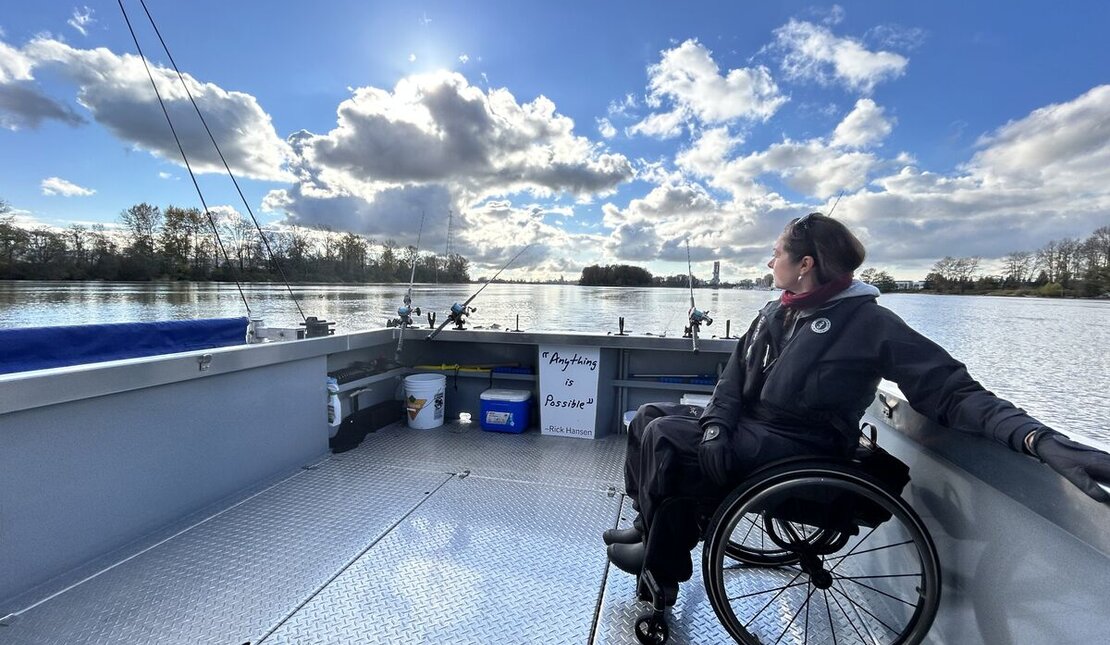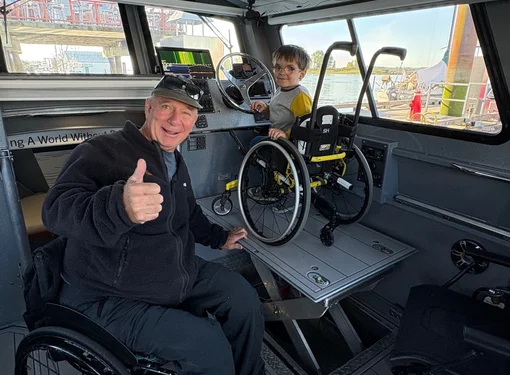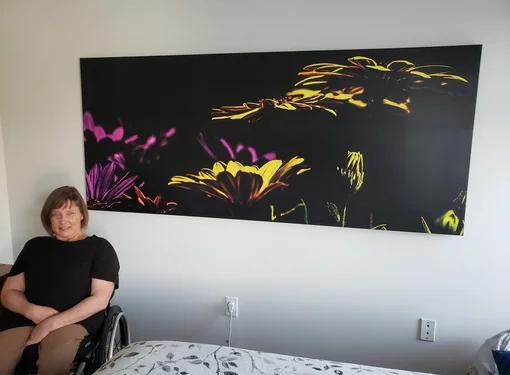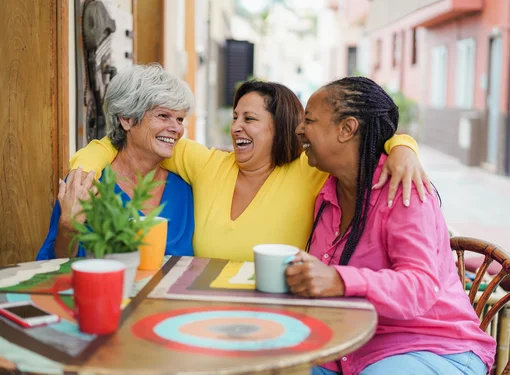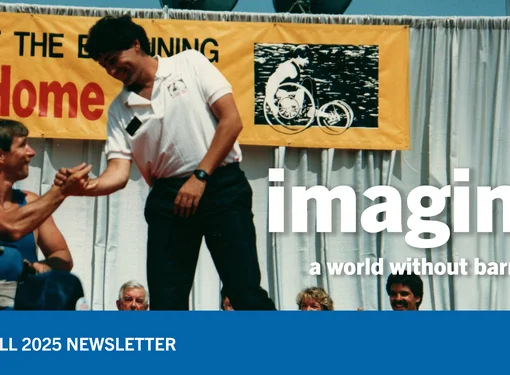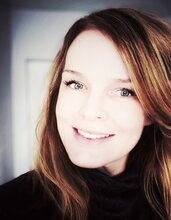Nature is Calling: Removing Barriers to the Outdoors
Laetitia Mfamobani was born by a lake and raised close to the sea. “Water is something that has always calmed me,” she said. As a child, her family would take a boat to an island where her mother owned property. It was often how the family spent weekends.
At the age of 15, Laetitia lost her vision. It’s been decades since she was last on a boat.
Until now.
Today, at the Steveston marina in British Columbia, the Rick Hansen Foundation (RHF) launched its Accessible Outdoors Program that features a unique, accessible, custom-built boat named Everyone Everywhere – a floating symbol of how the outdoors belongs to everyone.
The new program is made possible thanks to the generous support of the Peterson Family Foundation in honour of Kevin Peterson, an outdoor enthusiast who inspired many with his passion for nature. It was developed in direct response to Canadians with disabilities who have long voiced the need for better access to nature. While the program is launching with a focus on accessible marine experiences, its scope is designed to reach far beyond the shoreline.
Canada’s landscapes – its vast forests, mountain ranges, freshwater lakes, and coastal shores – are iconic, but they remain out of reach for many of the 1 in 4 Canadians with disabilities. Rick Hansen and The Rick Hansen Foundation envision a world where everyone can move freely, not only within buildings, but also across the natural environments that define our nation.
Time spent outdoors has been shown to reduce stress, improve mood and mental health, foster social connection, and encourage physical activity – all of which support better long-term health outcomes for people of all ages and abilities. Rick Hansen has spoken about nature's healing power, crediting the outdoors as a vital part of his recovery after sustaining a spinal cord injury.
The program will continue the work of eliminating physical, social, and systemic barriers so that everyone, regardless of ability, can experience the benefits of nature.
For Laetitia, the Foundation’s Accessibility Specialist, stepping aboard the Accessible Outdoors Program vessel was a visceral moment. “When I lost my sight, it became an impossible task for me to access the water I was born and raised by. Because the safety measures were not accessible or safe for me,” she said. These measures refer to life jackets that she can’t locate and dock walkways that can potentially catch her cane. “That alone is scary,” she said. “If you break your cane, you are doomed for the day.”
On Everyone Everywhere, she had a much different experience.
“The first time I got onto this boat, I said to my colleague, ‘Oh wow, it is all smooth here,’” Laetitia said. “And I was able to get on the boat with no trouble. It was the first time I was able to experience that.”
The headsets are another feature that stood out to Laetitia. “Everyone has headphones. That is so important because I can’t see, I depend on sound,” she said. “And if it is too noisy, I just get lost because I don’t know who is talking. But with the headphones, it was easy to follow the conversation and know who was talking.”
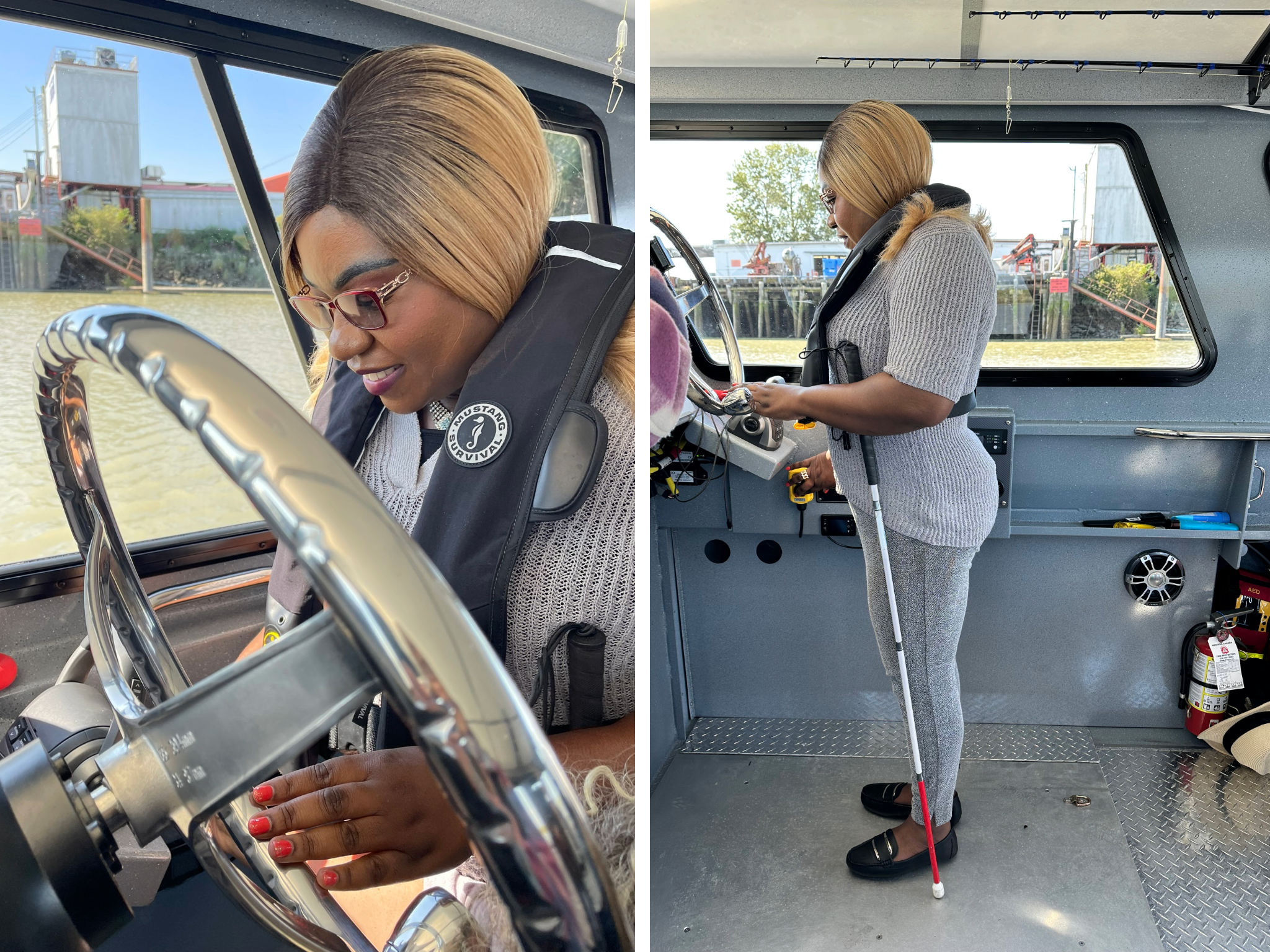
Accessibility to the Outdoors Matters
Sandy Saunders had her own moment of discovery last year during the Accessible Outdoor program pilot. Sandy, who uses a wheelchair, spent her summers on a farm just outside Edmonton, Alberta, surrounded by open sky and long views. She and her husband, Brad, now live in Edmonton, and they kept their three boys busy throughout their childhood with various activities such as water skiing and kayaking.
“Both of these activities required Brad to lift me out of my chair and into these vessels,” said Sandy. “And without my wheelchair, I am seated in one spot and not able to move around. Also, this type of transfer is physically demanding and a bit nerve-wracking – I haven’t been dropped yet, but there have been some close calls.”
But on Everyone Everywhere, there was no lifting. “I just rolled right on,” Sandy said. “I spend most of my day in my chair. Being able to stay in it, even on a boat, felt incredibly freeing. I like having the mobility to move around, and I could do that on this boat.”
The innovative vessel was built with these experiences in mind, from the barrier-free boarding to the elevated steering and an accessible washroom. Every detail reassures its guests: You belong here.
In partnership with local non-profits Power To Be, Fraser River Sturgeon Conservation Society and Pacific Salmon Foundation, the program is expected to inspire new projects, initiatives and policies that enable access and inclusion to the outdoors. While the program aims to drive change, its impact is already felt.
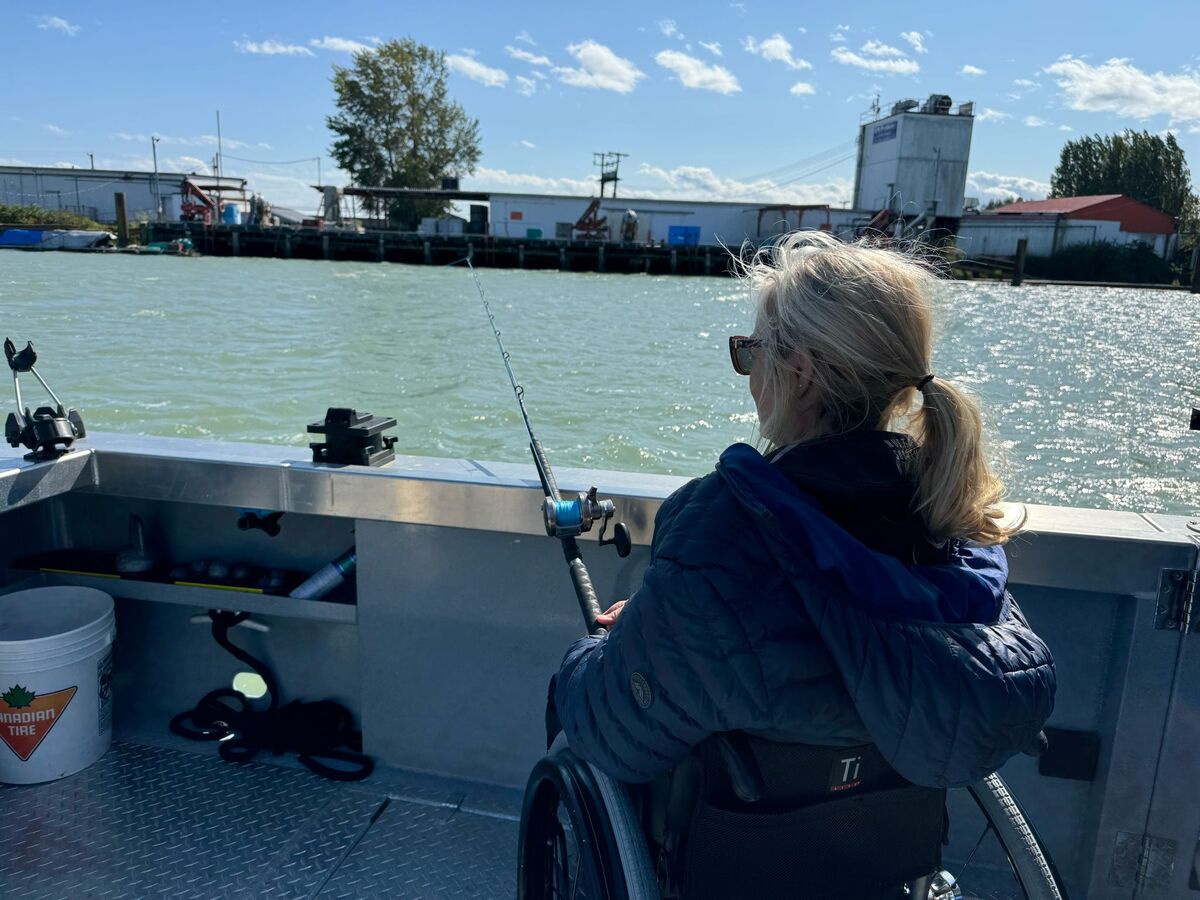
The program is an incredible experience, said Laetitia. “Having initiatives like the Accessible Outdoors Program helps create awareness of the difficulty that people with disabilities have when experiencing the outdoors,” she said. “It gives back independence and freedom to explore. It gives us a part of our life back. We deserve that. I deserve that.”
The Accessible Outdoors Program is more than the boat; it’s about what the boat makes possible. Learn more at RickHansen.com/Outdoors or email accessibleoutdoors@RickHansen.com.
